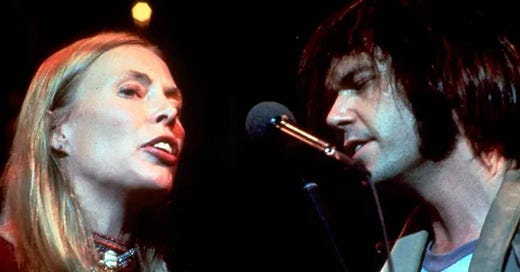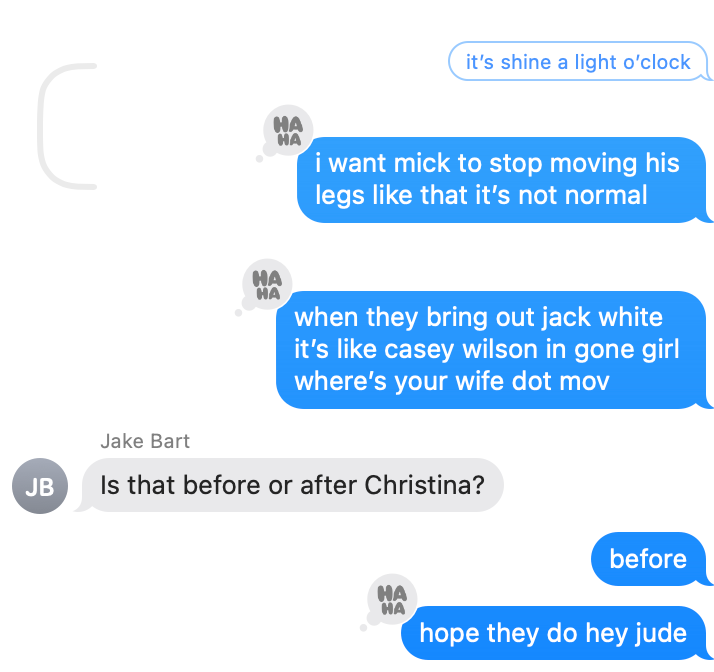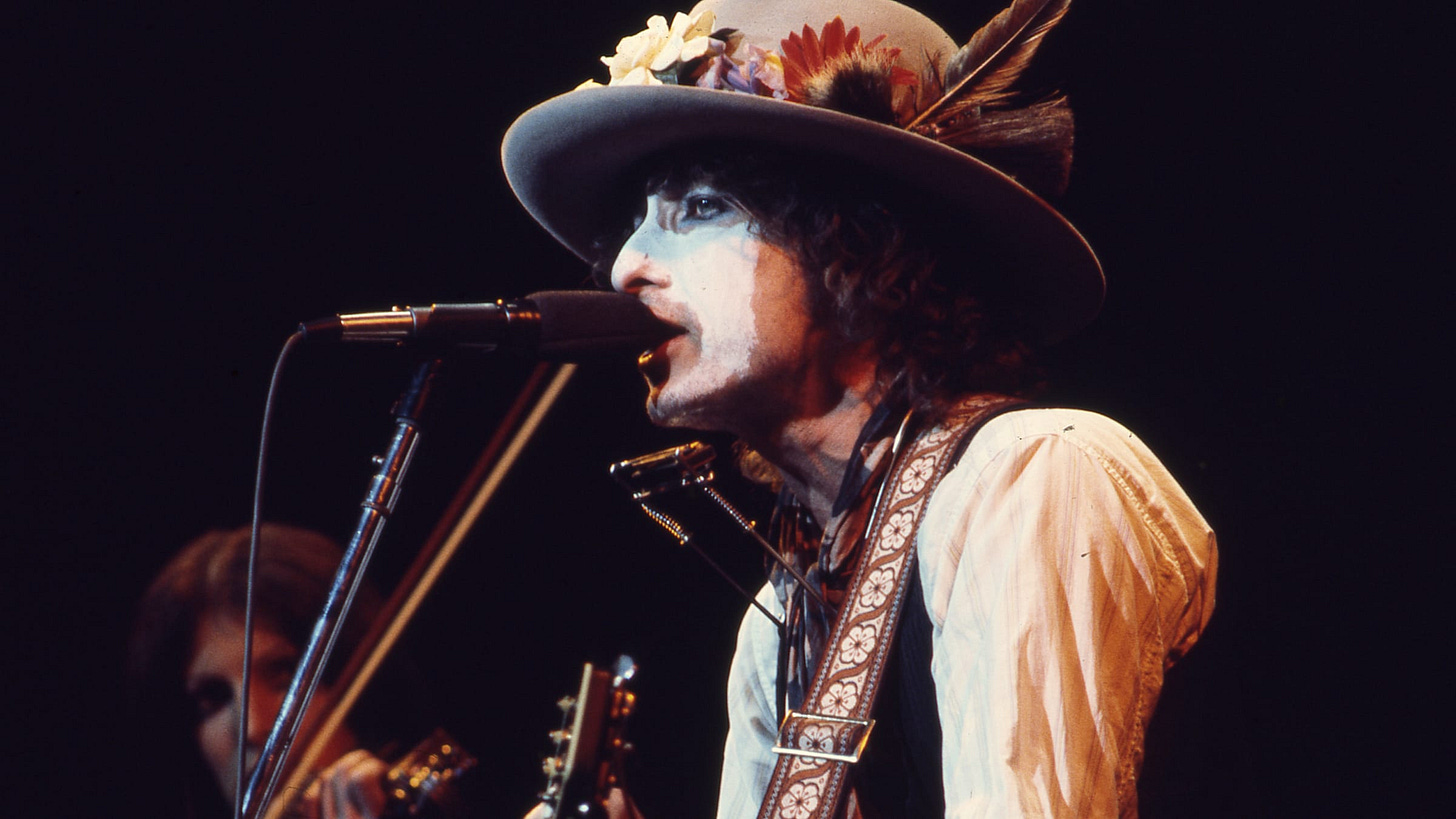Bob Dylan and others
We are nearing the end of #scorgayse blogging and this post is actually going to cover three films, including one I’d never seen before. The only theatrically released Martin Scorsese picture that was #newtome in this project. But now I’ve seen them all! Friends and enemies, these are the concert films of Martin Scorsese: The Last Waltz, Shine a Light, and Rolling Thunder Revue: A Bob Dylan Story by Martin Scorsese.
These films suffer for me on the basis that I don’t give a fuck about concert films. I always, like, don’t understand why I can’t be doing other things? I could just be listening to music and enjoying myself. Idk. What do I expect from concert films? I know what they are. And people will be like “no, this one is amazing, you must see it!” So I do, and I’m like, okay. They just aren’t for me.
That said, there are some interesting things to discuss! The Last Waltz, which, by the way, is the one I’d never seen before, is probably the most interestingly shot concert film I’ve ever seen. So that held my interest. Until I got too drunk, because I had a screenplay due and I finished it the day I watched, so I opened a bottle of wine and accidentally drank the whole bottle while watching a two hour film. Not me dropping hints that I finished a screenplay recently!
In addition to not giving a fuck about concert films, I don’t give a fuck about The Band. Like, who are they? Robbie Robertson is hot though, RIP. I only know the one song that everyone of a certain age knows. Martin Scorsese should have directed The Eras Tour movie if he wanted me to care. Now he knows that for next time. My favorite parts were when Bob Dylan and Joni Mitchell sang; those are two artists with whom I have a deep and intimate personal relationship.
But there is something about the lighting and framing of The Last Waltz that feels incredibly like a narrative film. Something purely in the filmmaking. I’ve never seen anything like that, and it was remarkable, so I’m happy to remark upon it. We are closer to the performers than I typically feel at a concert movie, emotionally speaking. There is no proscenium keeping us at arm’s length; there are certainly other concert movies where the camera is right up on the stage with the performer, but that emotional distance is still present. There is an intimacy to the filmmaking that makes me feel as if I know these folks, as with the characters in a narrative film.
So I respect the film for that. I appreciate the skill level that goes into these productions, and of course the skill level of the musicians—I do love watching how singers move their mouths and jaw to produce a note. Maybe someday I will be moved by the pure power and fury of a concert film, but outside of something directed by Beyoncé Knowles-Carter (I’m gay), it hasn’t happened.
I’m not really going to talk about Shine a Light at all, because even though I do quite like the Rolling Stones, I don’t think Mick Jagger moves in a normal way and I don’t like it. His body should not be able to do that and I want him to stop it. I don’t want to look at him with my eyes, I much prefer him being solely in my ears. So that’s on Shine a Light!
For me, the most engaging of Martin Scorsese’s concert films is Rolling Thunder Revue: A Bob Dylan Story by Martin Scorsese. Joni Mitchell sings the same song she sang in The Last Waltz, and that was fun. I mean, look, this movie is centrally about one of my favorite musicians; I have 28 albums and 287 songs by the man in my personal music library, per the Application Formerly Known As iTunes. Bob Dylan is someone I think about as much as I think about anyone, including my family, and he is the only celebrity whom I can impersonate well. So reflect on those facts…
What I love about this film is how it engages with the whole Dylan thing, the metamorphosing, the fuck you of it all, his desire to prank his audience while still trying to reach their souls. The movie is somewhat fictional; the film is about a Dylan tour from 1976 but the talking heads were all shot for the production of this film in 2017-18, and most of them are spinning a yarn to sell a mythical quality that Dylan was trying to create 40 years prior. Sharon Stone, in particular, does some low-key incredible work telling stories of “when she first met Bob.” But it’s just a story. It is a Bob Dylan story, as the title proclaims.
But the film doesn’t just depict all the Dylan nonsense but it expounds upon it. As with the other late Scorsese films, Rolling Thunder Revue is a picture about death (yay!). The footage of the tour itself was over 40 years old by the time the film was released. It is a time capsule. Unlike The Last Waltz and Shine a Light, which were shot and released contemporaneously, the footage here is a document, its own already existing text that Scorsese chose to shape years later. It has languished in, who knows, Bob Dylan’s garage for all that time, for all we know.
At the very end of the film, Dylan asks in a contemporary interview, what remains of the tour now? Nothing. But there is the footage. The footage both memorializes the specific persona that Dylan crafted for this tour while also betraying the notion that there are separate Dylan personas at all. There is no self. Dylan feels just as he did 40 years ago. I don’t really know how to articulate this. By framing the footage with a semi-fictionalized narrative, we get to a deeper truth about the self and the passage of time than we would have had the footage been turned into a film in the 70s.
When I was 18 and had a Motorola RAZR, my most cherished physical object in my entire life, I made a ringtone of Dylan’s “Hurricane,” the performance of which is the centerpiece and climax of Rolling Thunder Revue. The guitar jam at the chorus of the song still makes me think I am receiving a phone call, a Pavlovian response. When I heard it in this film, I knew the phone call was from DEATH💜






